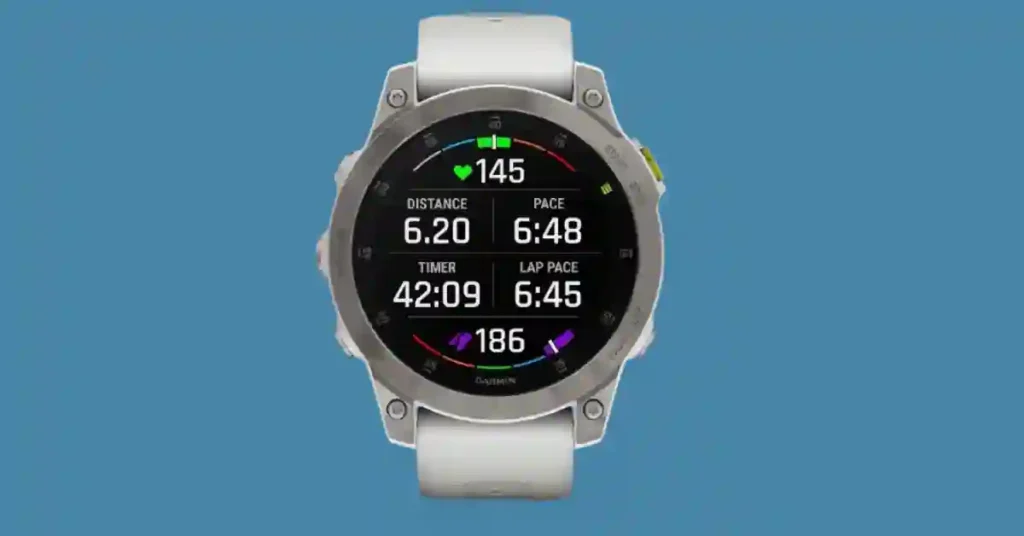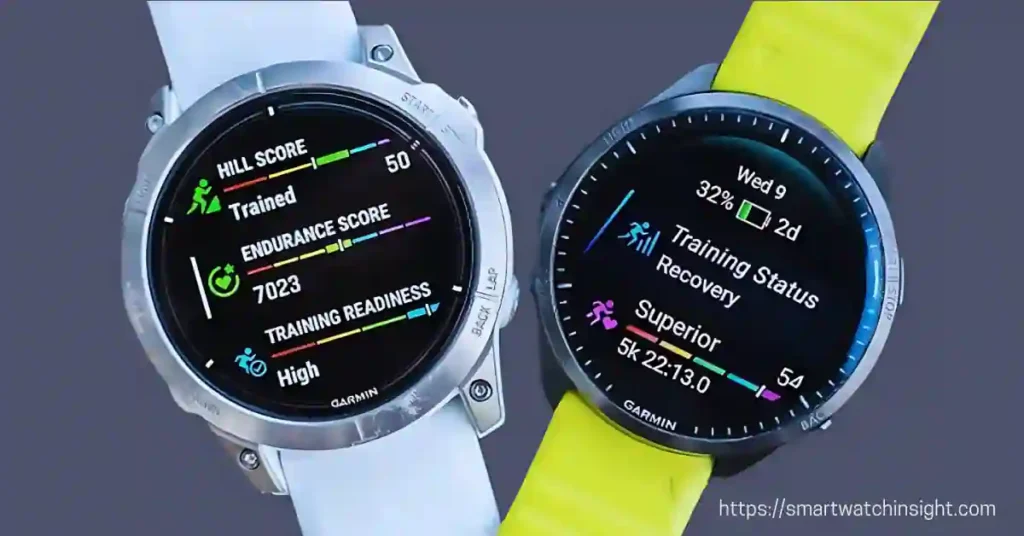Garmin is a leading brand in fitness smartwatches, especially among runners and endurance athletes seeking advanced tracking features.
Many people are curious about the upcoming Garmin Forerunner 975 and 275. They want to know if these new models will have exciting new features or just improve the ones we already have.
With previous models like the Forerunner 965 and 265 setting high standards, expectations are soaring. Will Garmin introduce innovative tools for runners, or will it rely on minor upgrades and hardware tweaks?
Let’s explore what we know so far and what we can expect.
Are the Garmin Forerunner 975 and 275 Coming Soon?
Garmin follows a two-year cycle for Forerunner releases. Since the Forerunner 965 and 265 arrived in March 2023, we expect the Forerunner 975 and 275 to launch in March 2025. However, no official leaks have confirmed the exact release date.
The 5Krunner sparked excitement by hinting that a mysterious Garmin device spotted in an FCC filing could be the Forerunner 975.
However, upon closer inspection, the device appears to be a rectangular, non-watch gadget—suggesting that the Forerunner 275 and 975 are still not on the horizon.
No matter when they launch, these two watches will probably be Garmin’s biggest release of the year for runners and endurance athletes.
Garmin’s Evolution: What’s Next After AMOLED?
Garmin’s recent lineup has seen a significant transformation. They have started using AMOLED displays. This began with the Forerunner 265 and 965 in 2023.
Since then, Garmin has transitioned many of its watches, including the Fenix, Instinct, and Vivoactive series, to AMOLED screens.
Garmin is working on MicroLED technology, which could significantly enhance outdoor visibility and extend battery life—key factors for runners and endurance athletes.
MicroLED technology might first appear on high-end models like the Fenix 8 Pro or Garmin Descent series. Later, someone could use it in the Forerunner line.
With AMOLED now the standard, the pressing question is: What’s Garmin’s next major innovation for runners?
Garmin’s Recent Trends: Incremental Upgrades or Real Innovation?

Over the past few years, Garmin has focused on refining key features rather than introducing revolutionary new ones.
Key Upgrades in Recent Garmin Watches:
- Multi-band GPS for better accuracy
- Elevate v5 health sensors for improved heart rate and wellness tracking
- AMOLED screens for vibrant displays
- Flashlight on Instinct 3 for added visibility
- Mic & Speaker on Garmin Venu 3 for Bluetooth calling and voice assistants
While these updates have been useful, some argue that Garmin has been playing it safe, especially in the mid-tier watches.
The Forerunner 275 and 975 will show if Garmin is ready to innovate or just make small updates.
What Features Can We Expect in the Garmin Forerunner 975?

Garmin expects the Forerunner 975 to be its top-tier running watch, placing it just below the Fenix 8 in premium features.
Here’s what we expect:
✅ Likely Upgrades:
- Elevate v5 sensor suite for ECG and skin temperature tracking
- Flashlight (similar to the Instinct 3 and Fenix 8)
- Mic & Speaker for Bluetooth calling and voice assistants
- Slightly improved battery life (beyond the 965’s 23-day estimate)
- Titanium bezel + polymer body for durability without added weight
❌ What It Probably Won’t Have:
- MicroLED screen (too expensive for this tier)
- Sapphire glass (Garmin will likely stick to Gorilla Glass)
- Drastic screen size increase (1.4-inch AMOLED is already the limit)
Many users really want LTE connectivity to come back. This would let them make calls, track in real-time, and stream music.
The last LTE model was the Forerunner 945 LTE, and it’s unclear if Garmin will bring this back for the 975.
What to Expect from the Garmin Forerunner 275

The Forerunner 275 is a mid-tier running watch. It improves on the Forerunner 265 but keeps some premium features from the 975.
✅ Possible Upgrades:
- Better battery life
- Aluminum bezel (instead of full polymer body)
- More advanced training metrics (Endurance Score, Strava Live Segments, etc.)
❌ What It Probably Won’t Have:
- Mapping features (Garmin typically limits this to higher-end models)
- Sapphire glass
- Elevate v5 sensors (it may stick with Elevate v4)
Since the Forerunner 265 is already a fantastic watch, the 275 doesn’t need to change much to be a solid upgrade.
But we will see whether Garmin will introduce game-changing features or just small refinements.
Will Garmin Introduce AI Coaching?
With brands like Apple, Whoop, and Fitbit integrating AI-based coaching and insights, there’s speculation that Garmin may do the same.
Garmin already offers:
- Garmin Coach for training plans
- Daily Suggested Workouts
- Training Load and Recovery Insights
However, these features are based on pre-set algorithms rather than AI-powered adaptability.
Garmin might create a chatbot running coach. They could also offer better AI insights for personalized training tips.
Would this be useful? Maybe. However, some Garmin users prefer data-driven training over AI-generated insights, so this remains a Controversial topic.
If Garmin uses AI, it must balance automation with user control. Athletes should be able to customize their training data and insights. They should not rely only on AI-generated recommendations.
Will the Garmin Forerunner 975 and 275 Keep Garmin Competitive?
Garmin is facing more competition from brands like Coros, Suunto, Apple, and Polar. These brands are adding new fitness tracking features.
- Coros offers superior battery life and a lightweight design.
- Apple Watch Ultra 2 boasts advanced health tracking and ecosystem integration.
- Polar and Suunto focus on precise training insights and heart rate variability tracking.
Garmin must deliver the Forerunner 975 and 275 to maintain its dominance in the triathlon watch space. The key factors that will determine their success include:
- Innovation: Will these watches introduce new training tools, or will they just recycle old features?
- Price-to-Feature Ratio: Will Garmin keep premium features only in expensive models? Or will the 275 and 975 provide good value?
- Battery Life: Garmin watches already excel here, but further improvements would be a major selling point.
- Software Upgrades: Will Garmin revamp its training load assessment, recovery tracking, or mapping software features?
Final Thoughts: Should You Wait for the Garmin Forerunner 975 or 275?
If you have a Garmin Forerunner 965, 955, or 265, you may not need to upgrade. This is true unless Garmin adds a major new feature.
If you have an older model like the Forerunner 245, 255, or 945, consider upgrading to the Forerunner 275 or 975. These newer models may offer new sensors, longer battery life, and better training insights.
Bottom Line:
- If Garmin adds LTE, AI coaching, or groundbreaking new training tools, the Forerunner 975 will be a must-buy.
- If it’s just a small change, you may want to stick with an older Forerunner model or wait for new ones.
- The Forerunner 275 is a good mid-range option. However, it might not have enough upgrades to make you switch from the 265.
Until Garmin officially reveals these models, we can only guess. One thing is clear: these launches will show how much innovation Garmin still has.
Are you excited about the Garmin Forerunner 975 & 275? What features do you hope to see? Drop your thoughts in the comments below and join the discussion.
Also Read:-
FAQ
When will the Garmin Forerunner 975 & 275 be released?
Garmin follows a two-year release cycle, so the Forerunner 975 and 275 will likely arrive in March 2025.
What new features can we expect in the Garmin Forerunner 975?
The Forerunner 975 may include ECG tracking, a built-in flashlight, and a mic for Bluetooth calling.
Will the Garmin Forerunner 275 be a big upgrade over the 265?
The Forerunner 275 will likely offer minor refinements like better battery life and enhanced training metrics.

